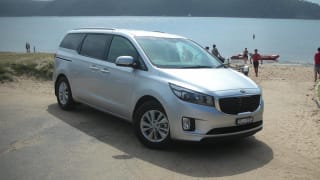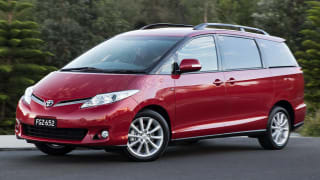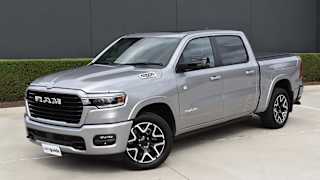Compared to the Kia Carnival, which looks like tomorrow’s people mover today, the iMax is looking more like yesterday’s as its tall and minibus-like dimensions are immovably defined by its iLoad commercial van birth twin. Even so, there is still plenty of practicality and ease-of-use inherent in this traditional design, including a bright and airy cabin with generous headroom for all.

The iMax rides on the same 3200mm wheelbase as the iLoad and shares many of its key dimensions along with power-assisted rack and pinion steering and four-wheel disc brakes. However, to provide better ride quality than the van’s leaf springs, for human cargo the iMax’s multi-link live rear axle rides on plusher coil springs. The Series II upgrade also includes restyled 16 x 6.5-inch alloy wheels shod with 215/70 R16C tyres and a full-size steel rim spare.
The large front doors open wide for easy entry and exit and with no console between the front seats the driver and front passenger can literally walk through to the passenger area. Sliding doors on each side, with large windows that can be propped open for extra ventilation, allow generous access to the second and third row seating. These bench seats provide ample head room and adequate shoulder and legroom for medium-sized adults, even with three across the back row, which is a refreshing change from many SUVs that treat third-row adults as extra baggage.

There’s also ample ventilation, with roof and floor-mounted air vents for the second and third rows linked to a separate control panel which allows passengers to adjust the fan speed and air-con temperature independent of the driver. Combined with generous headroom and large rear passenger side windows which can also be propped open, the iMax succeeds in minimising claustrophobic feelings particularly for those in the back row.










